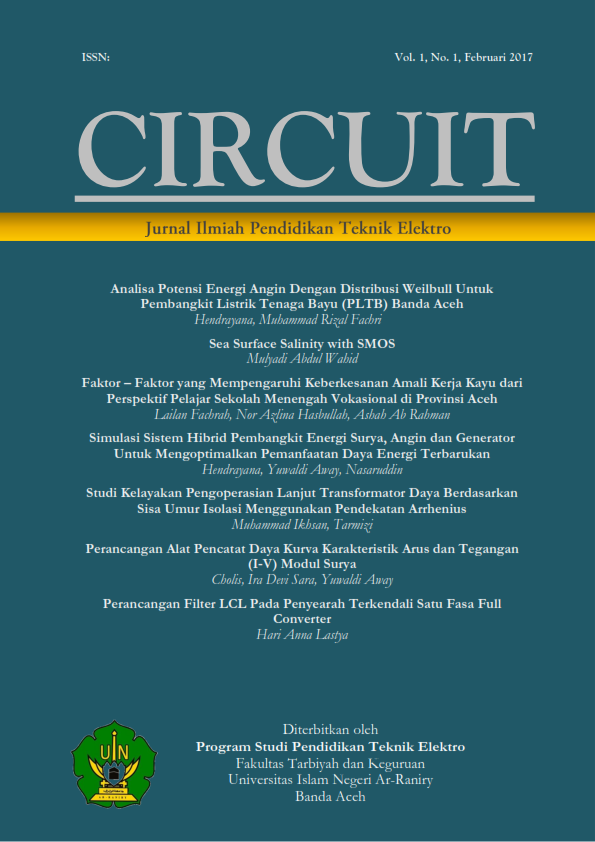PENGARUH SISTEM PENTANAHAN TERHADAP ARUS GANGGUAN TANAH PADA SISTEM DISTRIBUSI 20 KV
DOI:
https://doi.org/10.22373/crc.v4i2.7067Keywords:
ground system, etap 12.6, disturbance landAbstract
The process of electricity distribution often have been affected , including disruption to the ground. This study aims to analyse the impact of the current Ground system disorder to land at kV 20 distribution systems. Ground system that is solid analysis system , resistor , reactor. In a comparison with looked at and charts using etap 12.6. With the Ground solid System on a bus 2 with distance 300 m of the disorder of plants having 30.066. kA. For the current disorder 2 the phase to the ground having the disruption of 30.903 kA by the distance where closer the disorder bigger the disorder land so does the contraryReferences
Hutauruk.TS, Ir., 1999. n.d. Pengetanahan Netral Sistem Tenaga dan Pengetanahan Peralatan. Erlangga.
Ir. H Haizirin 2000, Samaulah. n.d. Dasar-Dasar Sistem Proteksi Tenaga Listrik. Unsri. Palembang.
Pangeran Alfidin, Mohammad. 2016. “Pengaruh Sistem Pengetanahan Terhadap Arus Gangguan Tanah Pada Sistem Distribusi 20 Kv Di PLN Palur Dengan Menggunakan Etap 12.6.” PhD Thesis, Universitas Muhammadiyah Surakarta.
SPLN 26 : 1980. n.d. “Standart Perusahaan Listrik Negara, Pedoman Penerapan Sistem Distribusi 20 kV.”
Sultan, A. R., M. W. Mustafa, and M. Saini. 2012. “Ground Fault Currents in Unit Generator-Transformer at Various NGR and Transformer Configurations.” Pp. 136–40 in 2012 IEEE Symposium on Industrial Electronics and Applications. Bandung, Indonesia: IEEE.
Suswanto, D. n.d. Sistem Distribusi Tenaga Listrik. Edisi Pertama, Juli 2009. Padang.
Utomo, Enggou Prastyo and Amien Rahardjo. 2013. “Analisa Sistem Proteksi Relay Arus Lebih dan Gangguan Tanah Pada Penyulang Limo.” 19.
Downloads
Published
Issue
Section
License
Authors who publish in CIRCUIT: Jurnal Ilmiah Pendidikan Teknik Elektro agree to the following terms:
- Authors retain copyright and grant the journal right of first publication with the work licensed under a Creative Commons Attribution-ShareAlike 4.0 International License (CC BY-SA 4.0) that allows others to share and adapt the work with an acknowledgement of the authorship and initial publication in this journal
- Authors are able to enter into separate, additional contractual arrangements for the non-exclusive distribution of the journal's published version of the work (e.g., post it to an institutional repository or publish it in a book), with an acknowledgment of its initial publication in this journal.
- Authors are permitted and encouraged to post their work online (e.g., in institutional repositories or on their website) prior to and during the submission process, as it can lead to productive exchanges, as well as earlier and greater citation of published work. (See The Effect of Open Acces)

